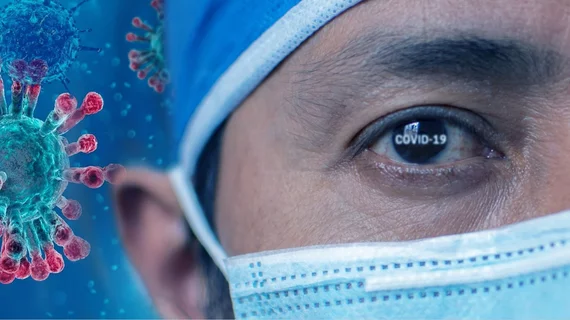COVID-19 pushes lung cancer screening rates lower and sends malignancies up to 29%
Low-dose computed tomography screenings, like most imaging exams, have nosedived since the pandemic hit. More patients, however, are coming back with abnormalities that may be cancerous, according to a new single-center study.
The University of Cincinnati College of Medicine compared its monthly LDCT visits for lung cancer screening during the COVID-19 lockdowns to numbers three years prior, sharing their findings Thursday in the Journal of the American College of Surgeons. When restrictions were lifted in June, the researchers found that 29% of patients had potentially cancerous lung nodules, compared to 8% before the pandemic.
Fear of contracting COVID-19 has pushed many patients to forgo their scheduled healthcare visits, according to first author Robert Van Haren, MD, which may have contributed to this rise in malignancies. Similar decreases in screening have been reported for other cancers and conditions, they noted.
Van Haren et al. also pointed out that even after resuming normal operations their practice recorded more patient-no shows and fewer new patient screenings. This implies people still may not be comfortable scheduling their needed health visits.
“Our results are important and suggest that it's critical to continue cancer screening operations ... during this pandemic," Van Haren said in a statement. "It's maybe more important now as we continue to undergo another surge of COVID-19 cases throughout the country."
The authors analyzed data from 2,153 patients who received institutional LDCT screening, keying in on a pre-COVID baseline period spanning January 2017 to February 2020, and this year’s surge lasting from March through July.
From the time the Ohio institution put LDCT on hold in March to its full reopening on June 1, 800 scans were canceled, the researchers reported. During that nearly three-month period, Cincinnati averaged 39 LDCT tests compared to 146 a month before the pandemic hit.
And despite now being fully operational, new visits have remained low, with the no-show rate upwards of 40% compared to 15% pre-COVID-19.
The team has tried to combat virus concerns keeping patients away, including communicating the organization’s updated safety measures. They also shifted LDCT screening from the hospital to the outpatient center to enable proper precautions.
Providers must make sure they’re not only caring for patients with COVID-19, but those without the disease as well, William B. Weir, MD, and Andrew C. Chang, MD, of Michigan Surgery in Ann Arbor, explained in an invited commentary.
"We must find a way to continue routine oncologic care or the true COVID-19 mortality rate will begin to include advanced stages of lung cancer,” the pair wrote.

